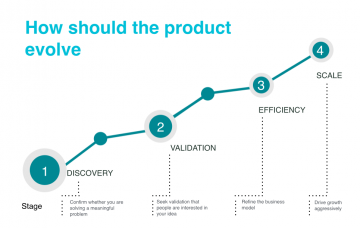Product Evolution
What is Product Evolution?
Definition:
“Product Evolution” refers to the ongoing process of enhancing, adapting, and expanding a product over time to meet changing market demands, technological advancements, and customer needs. It involves a strategic and iterative approach to product development, incorporating feedback, data analysis, and innovation to ensure that the product remains competitive and relevant in the dynamic business landscape. Product evolution encompasses various stages, from initial ideation to continuous improvement and adaptation throughout the product’s lifecycle.
Analogy:
Consider product evolution as the lifecycle of a living organism. Just as living organisms evolve to survive and thrive in changing environments, products undergo continuous refinement and adaptation to remain successful in the market.
Further Description:
Product evolution involves several key components:
Market Research and Analysis: Understand market trends, customer preferences, and competitor offerings through continuous research and analysis to identify opportunities for product improvement.
User Feedback Integration: Gather and incorporate feedback from users to address issues, enhance user experience, and introduce new features that align with user expectations.
Innovation and Technology Integration: Embrace technological advancements and innovations to stay at the forefront of industry trends, ensuring that the product leverages the latest capabilities.
Scalability: Design products with scalability in mind, allowing for easy expansion, adaptation to new markets, and the incorporation of additional features as the product evolves.
Agile Development: Adopt agile development methodologies that prioritize flexibility, collaboration, and iterative progress, enabling quick adjustments in response to changing requirements.
Quality Assurance: Implement rigorous testing and quality assurance processes to identify and rectify any issues, ensuring that the evolving product maintains high standards of performance and reliability.
Lifecycle Management: Develop a comprehensive lifecycle management strategy, including product updates, version releases, and end-of-life considerations, to guide the product through its various stages.
Why is Product Evolution Important?
Competitive Advantage: Continuously evolving products enable companies to stay ahead of competitors by offering innovative features and meeting changing market demands.
Customer Retention: Regular updates and improvements based on customer feedback foster customer loyalty, as users appreciate a product that adapts to their needs and preferences.
Adaptation to Trends: Products that evolve can better adapt to emerging trends and technologies, ensuring relevance in a rapidly changing business environment.
Maximized Potential: Through product evolution, companies can unlock the full potential of their offerings, expanding market reach and capturing new opportunities for growth.
Risk Mitigation: Continuous monitoring and adaptation reduce the risk of product obsolescence, helping companies navigate industry changes and economic shifts more effectively.
Examples and Usage:
Apple iPhone: The iPhone undergoes regular updates with new features, improved hardware, and software enhancements, keeping it at the forefront of the smartphone market.
Google Search: Google constantly evolves its search algorithm to provide more relevant and accurate search results, incorporating machine learning and AI advancements.
Tesla Electric Cars: Tesla continuously evolves its electric cars through over-the-air updates, introducing new features, improvements, and even enhancing vehicle performance without requiring physical modifications.
Key Takeaways:
- Regularly assess market trends, customer preferences, and competitive landscapes to inform the evolution of the product.
- Prioritize user feedback and preferences to guide product updates, improvements, and the introduction of new features.
- Embrace technological advancements and innovations to ensure that the product remains adaptive, competitive, and aligned with industry trends.
- Implement robust testing and quality assurance processes to maintain high standards of performance and reliability throughout the product’s evolution.
- Develop a comprehensive strategy for the entire product lifecycle, from initial development to updates, releases, and eventual retirement.





